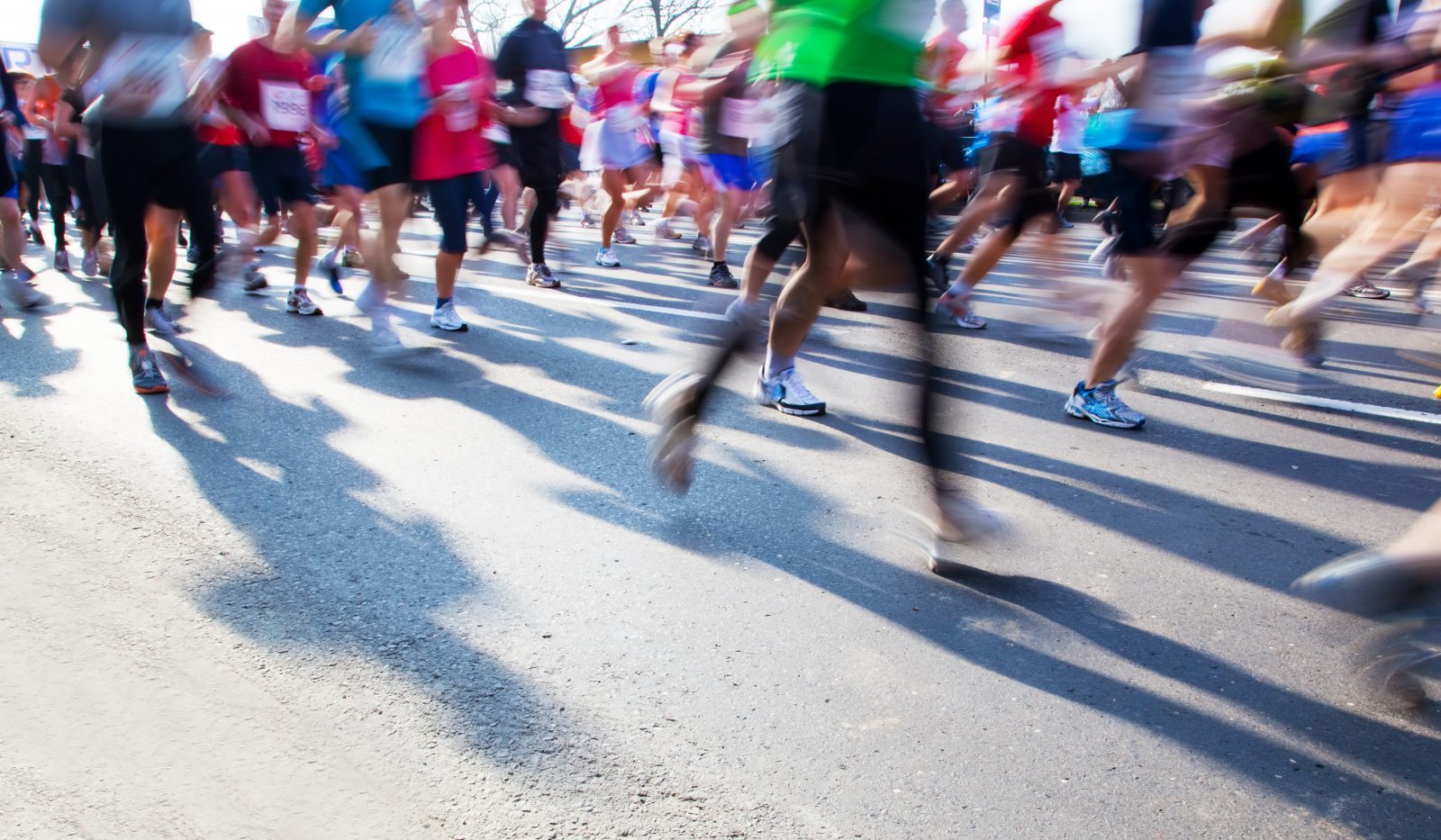By Chris Newport
So, you’ve decided to take on the marathon, or maybe you’re ready to go for a PR. But how do you choose the appropriate training and racing paces to perform your best? Here are 3 tips to pacing properly so you can run the perfect marathon.
1) Know Your Metrics (to train & race smarter)
A recent study published in the Journal of Sports Medicine examined the physiological characteristics of recreational marathon runners. Keep in mind, most of the research on marathoners is done on elite level athletes. To see this kind of literature done on “average” marathon runners was quite interesting.
It’s no secret that running 26.2 miles requires a well-developed oxygen system. Yet just like elite runners, VO2Max, lactate thresholds (LT1 and LT2), and running economy predicted race time and speed for recreational marathoners. As expected, the faster runners (2.5 to 3-hour marathoners) had higher VO2Max values, were better at clearing lactate, and were more economical than their slower counterparts (4-4.5+ hour marathoners).
Those running metrics were also associated with determining training speeds. They found that the runners trained below LT1 for 70-90% of their training. This type of “low and slow” running is correlated with improving your ability to use oxygen (and fat as a fuel source), increasing the number of capillaries to deliver that oxygen to working muscles, and more. Runners who ran more often and incorporated “smart” speed efforts were able to race faster too.
For the best training zones and realistic race predictions, get your VO2Max and lactate thresholds tested when your training begins and about 3-4 weeks before your race.
2) Dial in Your Fueling & Hydration Strategy
Now that you know your training paces based on your metrics, you can determine the right fueling and hydration strategy. Using your VO2 data, you can see how effectively your use fat or carbohydrates (aka glycogen) at each training pace. This will determine the amount of carbohydrates you’ll need during training and racing. Regardless, it’s important to “train your gut” just as your train your fitness by training with the same foods and products that you’ll use on race day.
Since dehydration continues to be the number one reason for poor performance in marathoners, be sure to weigh yourself before and after running to ensure you’re not losing more than 1% of your total bodyweight. If you sweat heavily, consider getting your sweat tested to determine the appropriate electrolyte replacement strategy to avoid cramping, GI distress or excess fatigue.
3) Pick the Right Race for You
If you’ve not seen the documentary Breaking2, where Eliud Kipchoge runs the fastest marathon in history in 2 hours and 25 seconds, you need to watch it. His team intentionally chooses the “perfect” marathon conditions on a flat course at sea level in cool weather with little to no wind. While those kinds of conditions don’t exist for runners like you and me, it’s a testament to choosing the right race if you want to PR your next marathon. Based on your metrics and knowledge of your body, pick a race that will suit you. Races that are hot, hilly, high altitude, overpopulated, or have lots of turns will slow your pace significantly. Instead of focusing intently on a pace band or watch (no, you’re not a robot!), compare the race profile to your running ability and adjust your pacing strategy accordingly.
Using these tips, you’ll be well on your way to successfully pacing your perfect marathon. Good luck and enjoy the journey!
Chris Newport, MS, RDN/LDN, EP-C, CISSN is a Coach, Registered Dietitian, Certified Sports Nutritionist, and exercise physiologist. She founded The Endurance Edge, an integrative performance center in Cary, NC offering endurance coaching, metabolic testing, sweat testing, nutrition, massage, physical therapy, sport psychology, and more. Get your metrics by booking online at www.TheEnduranceEdge.com. Follow her @theenduranceedge on YouTube, Instagram or Facebook.







